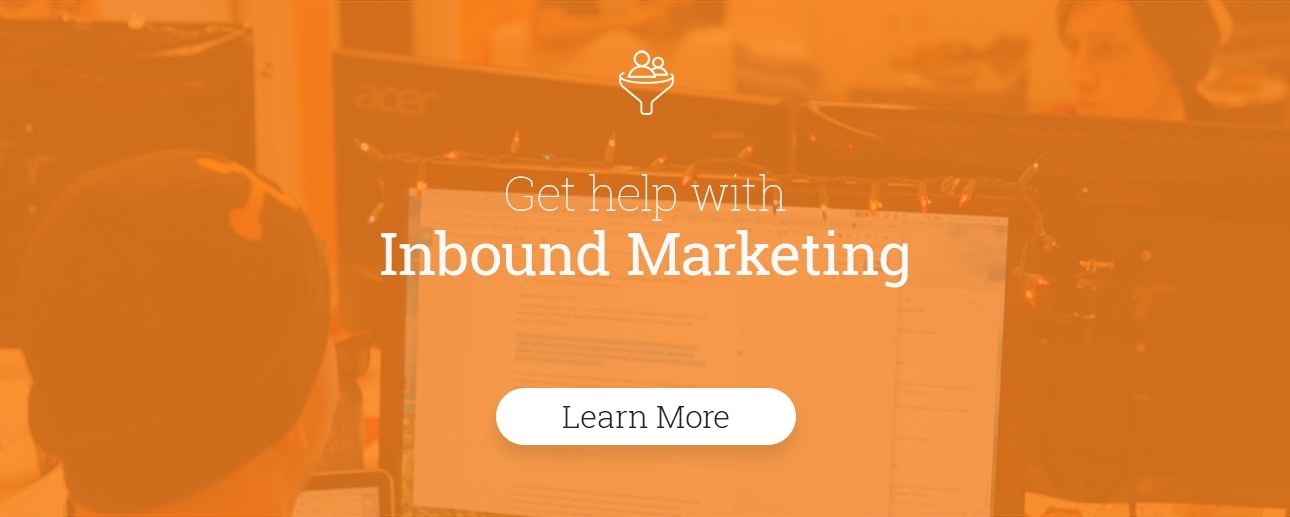Why Big Game Commercials are big, shiny examples of money wasted on outbound marketing.
Don’t put all of your advertising eggs in one $5 million basket.
That’s how much it costs to run just one 30-second ad during this year’s big game. And it’s a $5 million waste time, money and marketing resources.
Even while just about every outbound marketing medium (like television commercials) die a well-deserved death, these ads are still selling out in spectacular fashion. Brands are lining up to write $5 million checks and pay millions more for celebrity endorsement and video production.
In fact, the NBC Sports Group expects to generate more than $500 million, smashing a record for the single-day revenue generated by a single company, according to Dan Lovinger of NBC Sports Group.
So with all of these big brands are making marketers rich, one 30 second spot at a time, what exactly are they getting in return?
“The Impression That I Get”

This old school metric used to be the gold standard of advertising, instead of what it more accurately is today: one of many metrics that combine to provide valuable insight into the effectiveness of your marketing.
Incredibly high impression numbers still sell these ads because impressions are sexy. It’s kind of like selling a car by showing people how quickly it get to over 300 mph. Even if most people will never have the need or opportunity to go 200 mph, someone somewhere is going to be impressed enough to buy it without caring that it has absolutely no practical value.
Last year, Neilson reported that 111.3 million people tuned in last year. For a $5 million ad, that translates to about $0.045 per impression. That’s the same 4 - 5 cents for every set of eyes, without accounting for viewers who are:
- Not paying attention
- Too distracted to care
- Too young to be a consumer
- The wrong demographic for your brand
- Not in the market for what you’re selling
Oy.
(This poorly animated version of Wheels on the Bus has been viewed more than 2 billion times on YouTube. It’s not sung by Adele or anything, people just like it. And the brand didn’t have to pay anyone $5 million, they just had to make a video that people liked to watch and found helpful.)
How Inbound Stacks Up

For the same $5 million, you can purchase about 30,000 hours of inbound marketing. To put that into perspective, most small to medium sized businesses only need a monthly retainer of about 80 hours to significantly increase profits.
But let’s talk about those impressive impressions.
Unlike last year’s game day tally of $0.046 per person impression, digital inbound ads cost an average of $0.0028 per impression.
Which would you choose? $316,000 or $5,000,000
The other notable difference between inbound marketing and outbound marketing is that your inbound impressions can be the exact audience you’re looking for, when they’re most receptive to listening.
The core of inbound marketing is to provide the content and opportunity for consumers to find your product, service or brand when they need you. It’s being in the right place on the internet, at the right time, with the right information.
You’re not a pushy brand shoving ads in the face of innocent people, you’re the trusted ally of consumers who need your help. While every campaign is different, this usually happens by using a combination of educational blog posts, social media posts, social media ads and promotion, pay per click advertisements, tools and automated emails.
No, your inbound marketing probably won’t feature Busta Rhymes, Chris Pratt or Morgan Freeman like this year’s Super Bowl ads will, but no one in your c-suite will care.
Instead, you could use that $5 million to target the right consumers, with the right message at the right time, using:
- Professional social media marketing for 104 years
- +18 million leads from pay per click ads
- +15,000 helpful blogs driving leads to your website
Prove It

A 2017 Adweek article explained how Hyundai’s tear-jerking ad featuring active military personnel was dubbed the “Most Effective of Super Bowl LI”. But how do they really know it really worked?
Well, like all television ads, they don’t.
In that instance, the video tech company Unruly surveyed 1500 people to measure the effectiveness of last year’s Super Bowl ads, asking them about the same metrics that are measured by their Unruly EQ algorithm tool:
- Emotional impact and responses
- Purchase intent
- Predicted shareability
- Brand favorability
- Authenticity
- Relatability
- Credibility
All of that stuff is great to know for shaping your future creative work and marketing campaigns. But, here’s the question no one asking about these $5 million ads:
HOW MUCH MONEY DO THEY EARN? Because brand credibility isn’t a check you can actually cash.
That’s the question that makes outbound marketers arm themselves with statistics for brand reach, audience buying potential and lots of other facts that don’t pay the bills. In reality, they just can’t measure it. But bs stats are probably better than just simply shrugging.
Unlike that all of that metric mumbo jumbo, the ROI of Inbound marketing is famously easy to measure (in actual dollars), with a formula that’s actually simpler than middle school math:
X visitors convert = X leads = X customers = $X sales
Don’t like to do math? Hubspot has a calculator.
Pro inbound marketers use your real historical data to fill in the blanks of the inbound ROI formula. Then, they can provide a realistic estimate of how much you’ll need to spend on marketing to achieve your revenue goals.
The Moral of this Story
These ads are like Macy’s day parade floats of your mascot, a big-budget novelty. No one’s going to think about it after it rounds the corner out of sight.
Save big outbound ad spends for the big brands that want to show off on national television. It’s terribly ineffective, impossible to measure and really outdated. Stick with measurable, affordable inbound marketing techniques at are guaranteed to earn a better ROI for your business (and be a whole lot cheaper too.)





